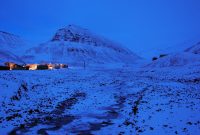Winter and its influence across the Globe
As the vibrant hues of autumn slowly fade away, nature begins to cloak itself in a serene blanket of cold. Winter, often viewed as a season of darkness, unveils its unique charm and beauty, inviting us into a world transformed by its frosty touch. Winter’s impact varies significantly across the globe, influencing regions in different ways due to climate, geography, and cultural differences.
Contrary to its chilly reputation, winter holds within it the warmth of togetherness. It beckons loved ones to gather around crackling fires, sipping hot cocoa coffee or tea. It’s a time for stories shared, laughter echoing through cozy homes, and the joy of being wrapped in the embrace of family and friends.
Here’s a glimpse of how winter affects different parts of the world:
1. Polar Regions:
Arctic and Antarctic: These regions experience extreme winter conditions with prolonged darkness, freezing temperatures, and vast expanses of ice and snow. Wildlife adapts to survive in these harsh conditions, while indigenous communities have developed specific cultural practices and technologies to thrive in these environments.

2. Temperate Regions:
North America, Europe, and Asia: Winters here vary widely. Northern areas endure heavy snowfall, icy conditions, and freezing temperatures, impacting transportation, agriculture, and daily life. In contrast, milder winters in some temperate zones still bring colder weather but with less snow and shorter duration.

3. Subtropical and Tropical Regions:
Regions closer to the equator: Experience milder winters, characterized by cooler temperatures compared to summer but without snowfall. In some areas, the change in weather might lead to increased tourism, while in others, it can affect local flora and fauna cycles.

4. Cultural and Societal Impact:
Seasonal Celebrations: Winter festivities such as Christmas, Hanukkah, Diwali, and various cultural festivals are celebrated across the globe, often involving traditions specific to the season.


Economic Impact: Businesses adapt to seasonal changes, with industries like tourism, winter sports, and fashion benefiting from winter activities, while agriculture and certain outdoor sectors might face challenges.
5. Environmental Impact:
Ecological Changes: Winter affects flora and fauna differently; some animals hibernate, while others adapt to survive the cold. Snow cover can also impact the environment, acting as insulation for vegetation and affecting water supply upon melting.
Climate Change Influence: Shifts in climate patterns affect the severity and duration of winters. Regions experiencing unusual weather patterns may witness unpredictable winter conditions, impacting ecosystems and livelihoods.
6. Health and Well-being:
Health Challenges: Winter can bring health concerns like cold-related illnesses, seasonal affective disorder (SAD), and an increase in certain ailments due to reduced physical activity and exposure to dry indoor air.
Outdoor Activities: Winter sports and activities like skiing, snowboarding, ice skating, and sledding are popular in regions with snowfall, promoting physical activity and tourism.


Winter’s effects are diverse and multifaceted, shaping societies, ecosystems, and cultures in unique ways worldwide. Adapting to and harnessing the opportunities brought by winter conditions remains integral for communities across the globe.







